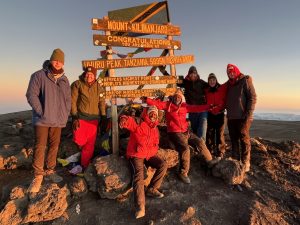Overview of the Climate in Selous Game Reserve
The Selous Game Reserve, located in southern Tanzania, is one of the largest wildlife reserves in Africa. It is renowned for its diverse wildlife, including elephants, lions, and hippos, as well as its stunning landscapes. One of the key factors that contribute to the rich biodiversity of the Selous Game Reserve is its unique climate.
The climate of Selous Game Reserve is characterized by a hot and humid tropical climate, with distinct wet and dry seasons. The wet season typically occurs from November to May, with heavy rainfall and high humidity. This period is also known as the "green season," as the landscape becomes lush and green, providing ample food and water for the wildlife.
Conversely, the dry season, which runs from June to October, is characterized by lower rainfall and cooler temperatures. During this time, water sources become scarce, leading wildlife to gather around rivers and lakes, making it an ideal time for game viewing.
Factors Influencing Weather Patterns in Selous Game Reserve
Several factors influence the weather patterns in the Selous Game Reserve, including its proximity to the Indian Ocean, the seasonal migration of the Intertropical Convergence Zone (ITCZ), and the topography of the region.
The Selous Game Reserve is located near the Indian Ocean, which plays a significant role in shaping the climate of the region. The warm waters of the Indian Ocean contribute to the high humidity in the area, especially during the wet season. Additionally, the ocean serves as a source of moisture, which fuels the rainfall during the wet season.
The seasonal migration of the Intertropical Convergence Zone (ITCZ) also influences the weather patterns in the Selous Game Reserve. The ITCZ is a band of low pressure that moves north and south of the equator, bringing with it rainfall. When the ITCZ is situated over the region, the Selous Game Reserve experiences heavy rainfall. Conversely, when the ITCZ moves away, the region enters the dry season.
The topography of the Selous Game Reserve also plays a role in shaping its climate. The reserve is characterized by a variety of habitats, including grasslands, woodlands, and wetlands. These different landscapes have varying levels of moisture retention and temperature regulation, which contribute to the overall climate of the region.
In conclusion, the climate of the Selous Game Reserve is a key factor that influences the diversity and abundance of wildlife in the area. The combination of a hot and humid tropical climate, distinct wet and dry seasons, and factors such as proximity to the Indian Ocean and the migration of the ITCZ create a unique and dynamic environment for both wildlife and visitors to experience.
For an unforgettable safari experience in the Selous Game Reserve, book a tour with Sunset Africa Safari. For booking requests, please contact info@sunsetafricasafari.com.


